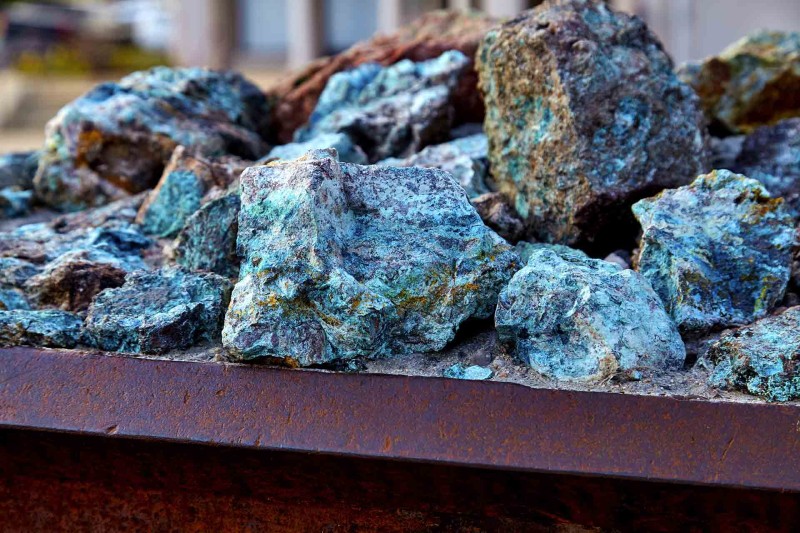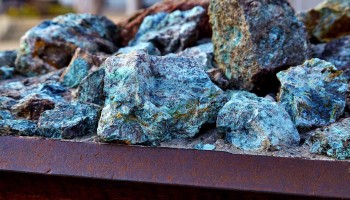In the 1990s Copșa Mică, a small Romanian town in the heart of Transylvania, was Europe’s most polluted city, thanks to two industrial plants that spewed toxins into the air: Carbosin, a maker of carbon black which is used in rubber tires and dyes, and Sometra, a lead smelter.
It was then and there that the main players in the Mineco-Moldomin copper-bribery scandal met.
According to other business partners at the time, Dimitrije Aksentijevic, now a director of Mineco AG, was doing business with Sometra and its then-director, Adrian Dan Rus. Aksentijevic, working for Glencore International, was buying Romanian lead from Sometra for the Swiss trading giant.
As the years passed Aksentijevic, a Serb, and Rus, a Romanian, forged stronger ties. In 1998, Aksentijevic joined another Romanian businessmen, Ștefan Mărginean, in a bid to privatize Sometra. Mărginean’s group, Metanef SA, lost out to a Greek company, Mytillineos Holdings – but gained a new employee when Rus left Sometra to work for Metanef.
Mărginean, 70, told OCCRP in an interview in his Bucharest office that he is disappointed to this day that the bid for Sometra failed.
"I worked with Miki Aksentijevic. He wanted to help me with the money to take over Sometra,” Mărginean said. "I was fronting the privatization though, not him, but things did not go our way."
But Rus, he said, became a key person in a few of Metanef’s subsidiaries, including Neferal SA, a lead-recycling firm in the outskirts of Bucharest. Rus became its executive director.
Metanef and Mărginean were also business partners with Glencore International, the controversial but hugely profitable commodities empire founded by financier Marc Rich.
Glencore and Metanef were partners in two other failed attempts to take over two other important Romanian industrial assets: Alro SA, the largest aluminium plant in southeast Europe and Sidex, the biggest steel mill in Romania.
Hard Time
Times have changed.
A lone guard watches over the few cars in the parking lot at Neferal SA in suburban Bucharest. A year ago the company entered bankruptcy proceedings. Mineco AG, once one of Neferal’s clients, is now one of its creditors, seeking US$275,000 from the Romanian company for Neferal products it says never arrived
That dispute is over trading lead, a far cry from the big plans Mărginean and Aksentijevic once had.
Around 2006, the Romanian state tried to revive the local copper and gold industry through partnerships with private investors. According to government documents, Mineco and Metanef joined forces in a 2006 bid to become major investors and partial owners of two of Romania’s largest mineral giants: Moldomin SA and Cuprumin SA , both of which controlled large copper deposits.
However, the Mineco-Metanef joint venture didn't go through and, in the end, neither did the Romanian government's plans. Glencore International participated, too, in the first stage of the bid but didn't follow through either.
Today Mărginean minimizes his role, saying he only helped Aksentijevic in initiating the process: “In fact, it was not a real partnership. At the time (2006), all I did was to buy the tender book on behalf of Mineco. Aksentijevic asked me to. So I bought it, he paid me for that and that was all”.
By then Rus had left Neferal, joining Mineco in 2011 as its Bucharest representative. Mărginean believes he made a bad decision. "Rus left us for Mineco. I haven't seen him since. I haven't talked with him. I had a lot of trust in him and I let him handle my companies. I shouldn't have."
Mineco, however, remained interested in Moldomin—an interest that culiminated six years later with the bribery scandal and the arrest and conviction of Rus and others. Aksentijevic meanwhile left the country on the day of the bribing of the judge and remains under investigation. Rus, who today is Mineco’s representative for Romania, declined to comment. After appealing his conviction and his five year sentence, he was given a two year suspended sentence for complicity in influence peddling.
The Golden Age
Glencore and Mineco’s interest in Romanian minerals goes back to the Communist times when the Bucharest regime was in dire need of foreign currency. Mărginean recalls when the regime of Nicolae Ceaușescu did business with Marc Rich's companies.
"I'm a metallurgical engineer. I worked for five years for the Romanian Economic Agency in Tokyo and, in 1980, I came back to (Romania) and I started working for Metalimportexport, the company which handled aluminium exports for Romania,” he said. "It was then that I met Marc Rich's people”.
"Three years later I become deputy director of the company. I was selling aluminium worth US$80 million every month to Marc Rich in the last years of the Ceausescues. I had such a good relationship with his people. I would just make a phone call and the next day another US$5 million would enter the bank account of Metalexportimport. With this money Romania paid its foreign debt," he said.
After the fall of the communism, Mărginean established the Metanef group of companies and became a top businessman in the Eastern European country.



